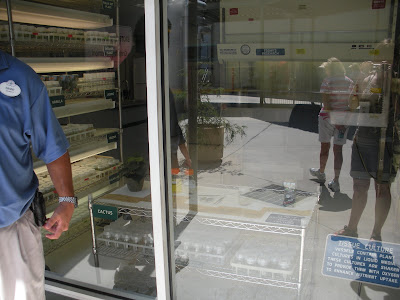
This is Farina, a beautiful angora rabbit. We had been trying to find one for a while now, but without luck. Then, earlier this week we stumbled upon a flyer at the Stockyard, our local feed store. A breeder had three angoras for sale for $12 each.

We've named her Farina, after the main ingredient in Cream of Wheat. Cream of Wheat is my favorite breakfast food, and because she's known as "oatmeal" colored, we thought it was perfect.
So why do we want this furry little creature? The hair makes for wonderful spun yarn. Mixed with wool, cotton, or other spinning materials, it creates an elegant, warm, and soft fiber.















































